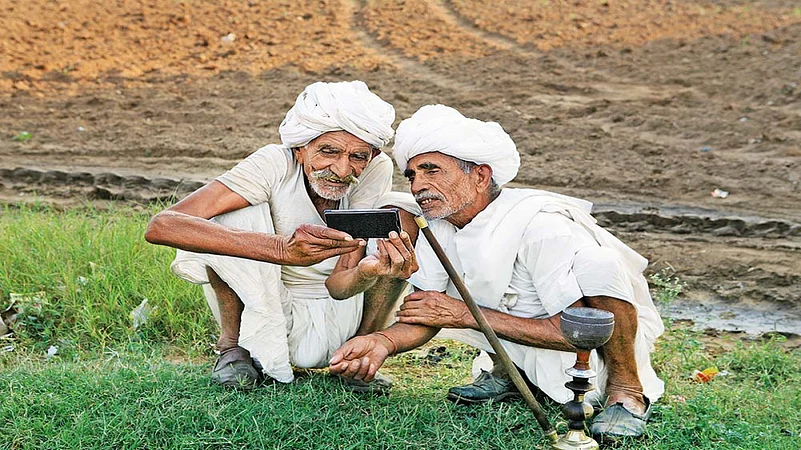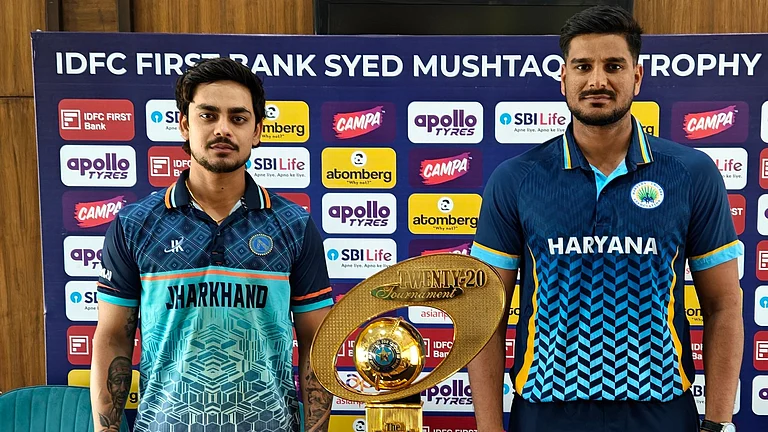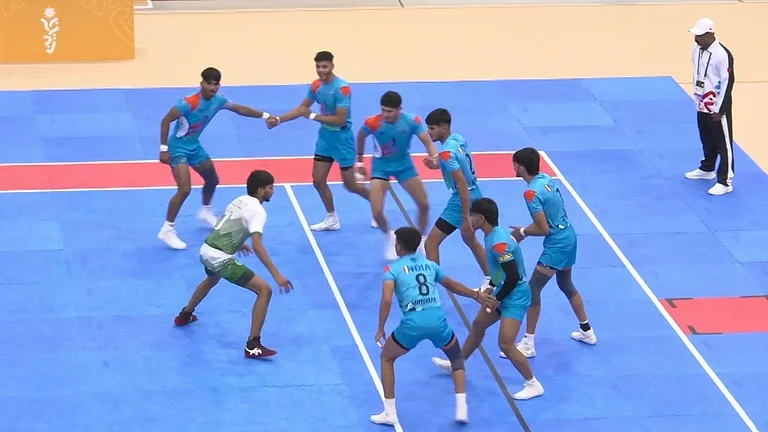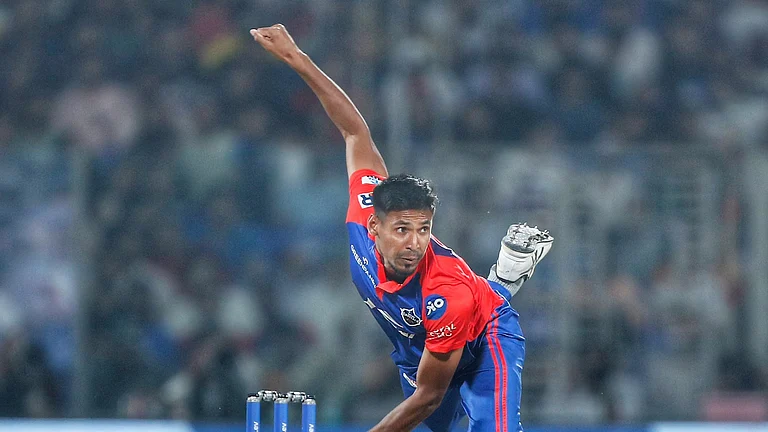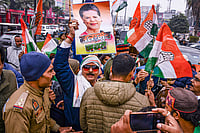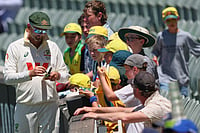The chances that you aren’t reading this piece on a smartphone are quite slim—just the sheer numbers say so. By the end of 2020, there were 1.1 billion mobile phone connections in the country, and at least 752 million of them were linked to the internet. India has the second largest number of phone connections in the world, and 98 per cent of them are wireless. (A caveat: the volume of connections does not translate into the number of users, as people have multiple phones, and SIMs they don’t use often.)
But we don’t need numbers to tell us what’s in plain sight. Across large cities and small towns, a phone store or recharge outlet can be found practically everywhere, selling every conceivable accessory for the devices that have our lives geo-tagged. Still, here’s what the macro picture looks like—about 150 million smartphones were sold in India in 2020, a year that upended life as we knew it. Yes, that market was hit by the pandemic, but it bounced back by the year-end. Smartphones worth Rs 1.5 crore were sold every minute over a week of Diwali sales by e-tailers in 2020, according to a media report. And, the picture of what lies ahead as we settle into life between lockdowns isn’t hard to guess. The phone is our primary screen to the world beyond and a ‘no service’ signal at its top corner could trigger a panic attack.
But how did we get here? From a finger-wheel dial to push button to touch, we passed along the way spring cables, retractable antennae and the screechy gobbledygook of dial-up modems in communion.
Look back at 1980 for reference. It marked the start of a decade when spadework began for what was to become the telecom revolution. That year, India had less than 2.5 million telephones, and all of them were in a handful of cities, which meant 97 per cent of the country’s six lakh villages had no access to phones. There were only 12,000 public phones for a population of 700 million. To make a phone call, you had to first get a clear line. To get a phone connection, well, the less said the better it is.
But let’s go back further into this story. In the early 1960s, switching—by the telecom department to connect the various lines—was done manually or through an electromechanical system called Strowger. Needless to say, telephones were rarer still, and they were all black with finger-wheel dials. It was about that time Theodore Baskaran, 81, first used a phone as a student at Madras Christian College. In 1964, he joined the posts and telegraph department as a bureaucrat.
In those days, the department was the single agency for letters, telegrams and telephones, until telecom was hived off into a new division in the mid-1980s. “One had to book a call and there were different types of calls like ordinary, urgent, and so on,” he explains. Baskaran’s stint with telephones—he retired as the chief postmaster general of Tamil Nadu—took him across the country, even once to the battlefront during the Bangladesh war to provide temporary lines for the army at their forward posts.
Meanwhile, the rotary dial telephones went from black to multi-coloured, which were, as Baskaran recounts, prestigious. “The demand for the telephone was grossly underestimated, so one had to wait for years. And, the telephone officials became powerful in those days, you know,” he says. “The infrastructure was poor, and there were no instruments and cables.”

ALSO READ: When Liberalisation Freed India Inc
Former Karnataka IAS officer Chiranjeev Singh recalls, with a chuckle, the experience of placing phone calls back in 1971 during his first posting. He was in a small town called Tarikere not far from the majestic sweep of the Western Ghats in Chikmagalur. “There was no STD facility (to place a call to other cities and towns) and we had to book the call,” he recollects. That meant calling up the exchange at district headquarters to place a call—sometimes it entailed waiting overnight for a call to the headquarters in Bangalore. “Ten hours was almost normal because you were in a queue,” he says. If a call was booked at two in the afternoon, the operator would be able to put it through only by nine in the evening or so. “By which time the offices there would be closed and you would ask the operator to ‘please take it (try) the next day’.” The lightning calls, which cost eight times the normal rate, were permitted for use only in emergencies.
“The younger generation may not believe this, but maybe people of my generation are nostalgic about it,” says Singh. Often, he knew the staff at the exchange whom, like most people who placed calls regularly, he recognised only by their voices. Some of the operators would chat briefly while placing the call. “That human interaction was interesting,” he says. That’s also the element that’s missing in most interactions today, he feels. A paradox perhaps of today’s era when we are more connected than ever before.
The storied event that changed the picture of connectivity came in 1984 with the setting up of the Centre for Development of Telematics (C-DOT) to design a new digital switching system that could withstand the rugged operating environment in India without air-conditioning. C-DOT, in some sense, was another way of import substitution, and became the government agency that took on the might of the oligopolistic and global foreign telecom equipment suppliers.
“From the outset, C-DOT was more than an engineering project,” wrote Sam Pitroda, who initiated and headed it for years, in the Harvard Business Review in 1993. “It did of course test the technical ability of our young engineers to design a whole family of digital switching systems and associated software suited to India’s peculiar conditions. But it was also an exercise in national self-assurance.” By July 1986, C-DOT’s first rural automatic exchange began field trials in a village in Karnataka. It was a ‘small masterpiece’ about three feet by two feet by three feet with 128 lines built by a team whose average age was about 25. By 1993, as Pitroda wrote, the country was installing 25 rural exchanges every day.
The actual revolution for the consumer was the PCO or public call office, “a characteristically Indian innovation not so much in technology as in management”, as Prof Shivanand Kanavi, a former TCS vice president, wrote in his 2004 book, Sand to Silicon: The Amazing Story of Digital Technology. It brought connectivity to millions, if not to their homes, but at least to everywhere else. There were, at the time of writing, over 6 lakh small entrepreneurs manning these booths, he notes. Now, one could walk up to a local PCO, typically a few hundred metres away, and make STD calls within seconds, and at cheap rates. Suddenly, aged parents could talk to their sons and daughters, who lived abroad, for an hour. The telephone chats between secret lovers lasted hours into the night, as some of the PCOs were open till midnight.

Of course, the mobile phone dramatically took the pace of growth into a different orbit. Today, India has 20 million landline telephone connections, which is about 2 per cent of total connections. By the end of 2020, there were WiFi hotspots in one lakh gram panchayats, and about 1.5 lakh of the panchayats had access to high-speed broadband.
But zoom back in on the picture of the Indian household for that transformation. “See how fast things have changed,” says Bangalore-based businessman-turned-farmer N. Sankaran, 82, as he traces his own experience of that journey. Like most people back then, Sankaran hadn’t used a phone. Nor, as he puts it, was there a reason to use one. This was until he came to Bangalore in the early 1960s, and found work with a book distributor. Later, when he set up his own bookstore, a personal phone connection followed. In the mid-nineties, the family graduated to a cordless handset, and by the end of that decade, his son had acquired a bulky Alcatel cell phone. Today, his grandsons keep in touch with him via WhatsApp.
More striking, he says, was the pace of change back in his village in Kerala’s Palakkad district. Around 1989-90, he applied for a telephone connection there, and it took about six months to materialise. Neighbours would frequently drop in to receive calls, especially those with sons working in West Asia, he reminisces. (It was customary for neighbours to give your landline number to their relatives and friends.)
Things have since changed dramatically. By 2008, as many as 10,000 mobile handsets were being sold every hour, went one report. The three key projects that laid the foundations of the communications and IT boom, points out Kanavi, were C-DOT’s digital switching technology, the computerisation of Indian Railways, and ISRO’s communications satellites. He recalls a major Swiss banking project that TCS bagged in the late 1980s. “That was a great learning project and eventually TCS became the dominant force in banking,” he says. But back then, the tapes of data and programmes for that project were carried on Swiss Air flights from Bombay. “Literally, it had to be couriered,” he laughs. “So, all those things changed with the laying of the digital infrastructure.” Modernisation in industry and finance, due to economic liberalisation, followed the modernisation in telecom. “Actually, one fed into the other.”
But when it came to hardware skills for the GSM-mobile era, things fell behind, says Kanavi. “In this whole tech development from 1G to 5G, India has hardly any role,” he says. But things are now poised at an interesting perch, he reckons, with Indian firms making a bid for 5G technology. A case in point is Airtel’s recent tie-up with TCS for indigenous network solutions.
Given the churn in the telecom market in recent years, India’s mobile data pricing is currently among the cheapest in the world even if the operators’ financials are anything but rosy. “From a consumer perspective, things look good,” says a recent GSMA’s Mobile Economy report. But there are fears of a near-monopolistic or duopolistic situation which, in the future, may harm the interests of the users.
Over the years, call pricing has probably shaped consumer behaviour as well. Think of all the long phone conversations, audio and video, across cities these days. Back in the days of the landline telephone, and the early years of mobile, one kept an eye on the ticking minutes. “Those days, the long distance calls were expensive so you were very brief on the phone,” says Chiranjeev Singh. Here’s an aside—Singh, who retired as the additional chief secretary of Karnataka in 2005, has never owned a mobile phone.
(This appeared in the print edition as "From Hell to Hello")
ALSO READ
By Ajay Sukumaran in Bangalore






